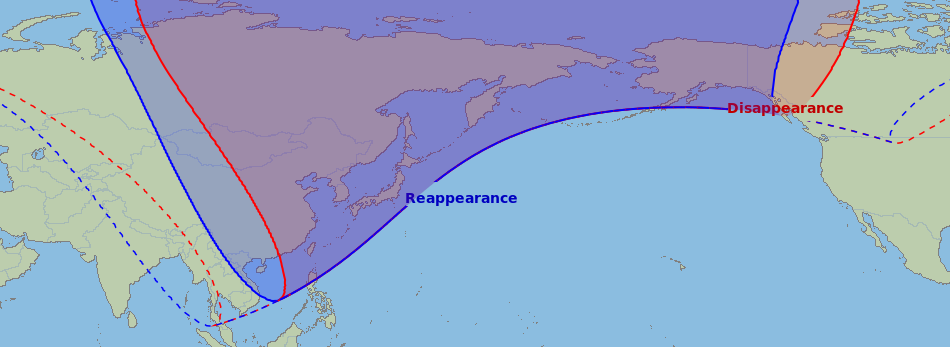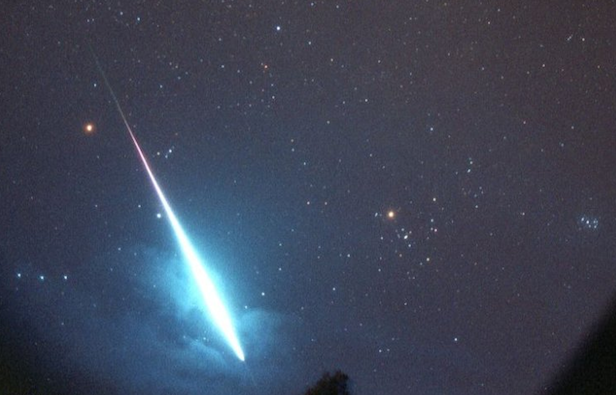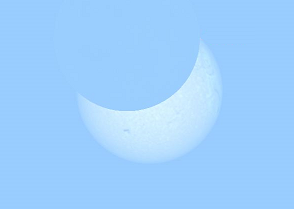Autumn is the most favorite season of astronomers. On the one hand, it is not very cold yet, on the other — the nights are already long enough and allow for more observations. In general, the autumn sky is not rich in bright stars: in our latitudes in the evenings you can observe the “Summer Triangle” (Vega, Deneb, Altair), in the north a yellow Capella shines low above the horizon, in the south a white Fomalhaut, until mid-October orange Arcturus is visible in the west. But it is this autumn that will bring us a lot of interesting celestial events that fans of astronomy can see.
The autumnal equinox, traditionally becoming the “loudest” astronomical date of the season, will come on September 23 this year. But it is not at all outstanding from the point of view of observations: our luminary at this moment is practically no different from what it was the day before or would be the next day. The best way to celebrate this event is to go to the nearest ancient “earth observatory” and make sure that our ancestors did not make a mistake in determining the direction to the sunset point.
Oppositions of the big planets
The giant planets, gathered this year in the 90-degree sector between the constellations of Capricornus and Taurus, continue to enter into opposition to the Sun. Saturn was the first to do this back in mid-August, and Neptune would pass this configuration on September 16. The most remote planet can be found only with a telescope or at least binoculars, and its disk can be viewed at an increase of more than 80 times. It will move along a section of the sky devoid of sufficiently bright stars, 6° northeast of the 4th magnitude star φ Aquarii. To search for it, you will need a map of the celestial sphere with objects up to the 8th magnitude.
The next planet to pass the opposition this autumn is Jupiter. Unlike Neptune, it is very easy to find it: now it is actually the brightest star-like object in the night sky. Due to the fact that the largest planet is approaching its perihelion (the point of orbit closest to the Sun), on September 26 it will be almost at the minimum possible distance from Earth (3,953 AU or 591 million km), so that its brilliance will only “fall short” of -3ᵐ. In the evenings, Jupiter will rise in the southeast, culminate at midnight, and at dawn — hide behind the horizon in the southwest. Even a small binoculars with a magnification of 10-12 times will show the four largest moons of the planet, and the details on its disk can be viewed already in 40-fold instruments.

Even more interesting “adventures” await Uranus, which is now moving very close to the plane of the ecliptic. On the night of September 14-15, the Moon will cover it, and this phenomenon will be perfectly visible from all over Ukraine (of course, with a cloudless sky). This planet will enter into opposition on November 5, and in three days its occultation will take place again, this time during a total lunar eclipse. This is an incredibly rare coincidence, but, unfortunately, we will not be able to see this phenomenon in Ukraine — it will be visible in north and East Asia, as well as in Alaska and northwest Canada.
The brilliance of Uranus does not much exceed the sensitivity limit of the naked human eye, so you can try to see it without a telescope in areas with a clear, unlit sky. As in the case of Neptune, to search for a planet, you need to use a star map or a planetarium program. Instruments with magnification of more than 60× will make it possible to distinguish a tiny greenish Uranian disk.

Mars will be approaching its opposition all this time, which will happen in early December. It is also worth mentioning that the western elongation of Mercury is quite favorable for observations. Despite the fact that on October 8, the smallest planet will be separated from the Sun by only 18°, it will not be difficult to see it in the first half of the month before dawn as a star brighter than zero magnitude, which will appear above the eastern horizon in the morning twilight.
Comets and asteroids
In the autumn of 2022, three objects of the Main Asteroid Belt will approach the opposition, the brilliance of which will reach or exceed the 9th magnitude. The first of them will be Juno (3 Juno) — it will be in opposition on September 7 and on that day will be in the sky 4.5° southwest of the star φ Aquarii. Since its brightness at this time will be about 7.7ᵐ, it can be found by the same methods as Neptune — using a detailed map of the desired area of the celestial sphere or a planetarium program. This appearance of Juno is considered favorable, but in October 2031 the conditions of its visibility will be even better.
The rotation of Juno according to the observations with the ALMA radio telescope (Chile)
A noticeably weaker Euterpe (27 Euterpe) will take place on November 12. Its brilliance will rise to 8.8ᵐ due to the fact that at the same time it will move along a section of its orbit close to the Sun. The asteroid will be located in the constellation of Aries about 4° south of the star Botein (δ Aries) and 3° east of the planet Uranus.
Of all the “autumn asteroids”, the closest to perihelion will be Bamberg (324 Bamberga), which will be in opposition on November 22. However, due to the relatively small size of this object, its brightness on this day will barely reach the 9th magnitude. But it will be very convenient to observe it in our latitudes, since its visible path will lie among the stars of the northern constellation of Perseus. The minimum distance between the asteroid and the Earth will be 0.972 AU (145 million km).
Comet C/2022 E3, discovered in March 2022 using the ZTF (Zwicky Transient Facility) camera, continues to approach the Sun and Earth. It will pass its perihelion in January 2023, and in early February it will approach us by 0.284 AU (42.5 million km). It is assumed that then it will be possible to see it with the naked eye. For small amateur instruments, the “tailed star” will become available to observers as early as November, when it will move along the northern part of the constellation of Serpens near its conditional border with the Northern Crown. Its brilliance should exceed the 9th magnitude, but remember that all predictions of the brightness of comets should be treated with caution.
Meteor showers
The season of fairly powerful autumn meteor showers is opened by the Draconids, “born” by the short-period comet Giacobini–Zinner (21P/Giacobini-Zinner). Last year, it passed the farthest point of its orbit from the Sun, and the main part of the meteor swarm is now located there, which means that this autumn it is not worth expecting noticeable bursts of its activity — at the maximum on October 9, it will “give out” its usual 15-20 meteors per hour. The radiant of this stream in our latitudes does not go beyond the horizon, being above its northwestern and northern parts almost all night. It should be remembered that this year’s observations will be hampered by an almost full Moon.
A similar situation is with the Orionids associated with the famous Halley comet (1P/Halley). It is also now moving near aphelion, so the activity of the flow is expected at the level of “average” values — about 20 per hour. Its maximum falls on October 21-22, at which time the constellation of Orion rises at about midnight.

In mid-October, the first meteors of the Southern Taurid stream appear, the maximum of which falls at the beginning of November. The hourly number of “shooting stars” at this time reaches 15. Even more powerful is the northern “branch” of this stream with a peak on November 7-8 — these days it “produces” up to 30 meteors per hour. For the current year, astronomers predict an increase in its activity. Both swarms with a radiant in the constellation Taurus, rising in the evening at the end of autumn and remaining above the horizon all night, are associated with the famous comet Encke (2P/Encke).
Finally, from the first week until almost the end of November, Leonids are observed — a very well-known stream generated by the Tempel-Tuttle comet (55P/Tempel-Tuttle). For several years, its activity was at a minimum and even on the peak date of November 17-18 did not exceed 15 meteors per hour. But now the comet is approaching the Sun and will pass perihelion in the spring of 2031, so a gradual activation of the flow is possible. Its radiant in the constellation Leo rises in the second half of the night, but, unfortunately, until November 20, the Moon will be near it.
October solar eclipse
The lunar eclipse of November 8, inaccessible to observations in Europe, has already been mentioned above. A private solar eclipse on October 25 will be perfectly visible from all over Ukraine in very favorable conditions. In Kyiv, the Moon will begin to close the disk of our luminary at 12: 22 minutes 45 seconds local summer time and at the moment of the maximum phase, which will come at 01:36:45 p.m., will close it by almost 61% of the diameter. An even larger phase can be seen in Sumy and Kharkiv (65% and 66%, respectively), as well as in occupied Luhansk, where it will reach 68%. In the worst conditions will be the inhabitants of Carpathians, where the Sun will be eclipsed by only half.

Venus will be located approximately one degree from the Sun in the sky, but the total darkening even during the maximum phase of the eclipse will not be enough to notice it. In general, this eclipse will not be seen anywhere on Earth as complete or annular. The highest possible phase of 86.2% is expected at a point with coordinates 61.6° N, 77.4° E near the Siberian city of Nizhnevartovsk.
We remind you that when our luminary is more than half a degree above the horizon, it is impossible to look at it without protecting your eyes with a dark glass or a special mirror filter, in any case, in order to avoid damage to vision.
Follow us on Twitter to get the most interesting space news in time
https://twitter.com/ust_magazine

